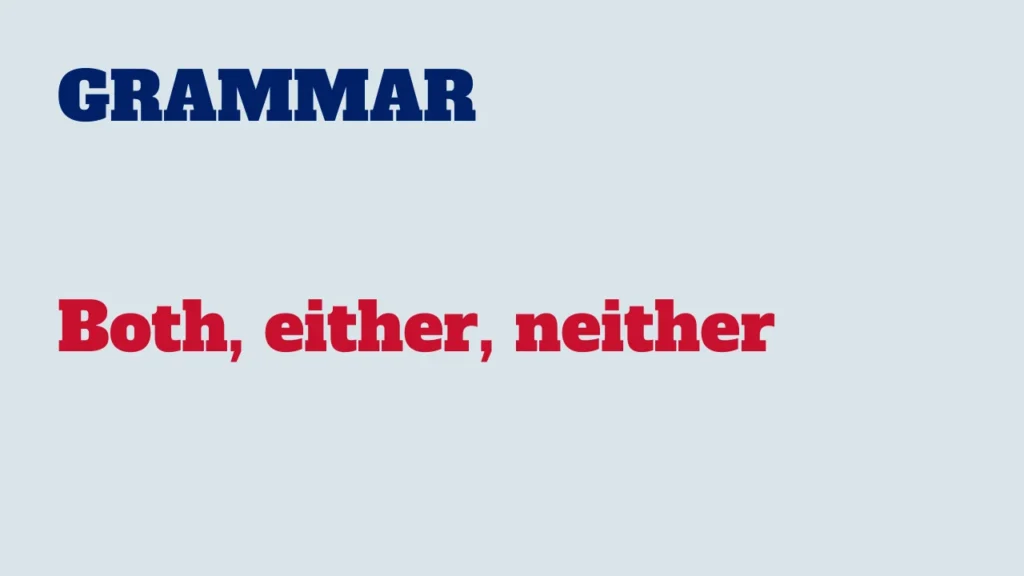The words “both,” “either,” and “neither” are essential for expressing choices, similarities, and exclusions in English.

In this lesson, we’ll explore the usage of these words and understand how to incorporate them into sentences for clear communication.
Both:
Usage:
“Both” is used to refer to two items, people, or actions together.
Examples:
Both of my parents are doctors. (Both parents = father and mother)
We can go to both the museum and the zoo.
Either:
Usage:
“Either” is used to refer to one of two options or choices.
Examples:
You can either have tea or coffee.
Either you come to the party, or you stay home.
Neither:
Usage:
“Neither” is used to indicate not one nor the other of two options.
Examples:
Neither of the options seems appealing.
They offered two desserts, but I liked neither.
Key differences:
Both vs. Either:
“Both” emphasizes the inclusion of two items.
Example:
I like both chocolate and vanilla ice cream.
“Either” presents a choice between two options.
Example:
You can take either the blue or the red pen.
Neither vs. Either:
“Neither” emphasizes the exclusion of both options.
Example:
Neither of the movies interested me.
“Either” implies a choice between two options.
Example:
You can pick either the early flight or the late one.
Placement in sentences:
Both:
Can be used at the beginning, the middle, or the end of a sentence.
Examples:
Both of them agreed to the plan.
I like them both.
Either and neither:
Often used at the beginning of a sentence.
Example:
Either you come with us, or you stay home.
Mastering the usage of “both,” “either,” and “neither” is crucial for expressing choices and exclusions in English. By understanding their distinctions and using them appropriately in sentences, you can convey your intentions clearly and effectively. Practice incorporating these words into your conversations to enhance your language skills. Happy learning!